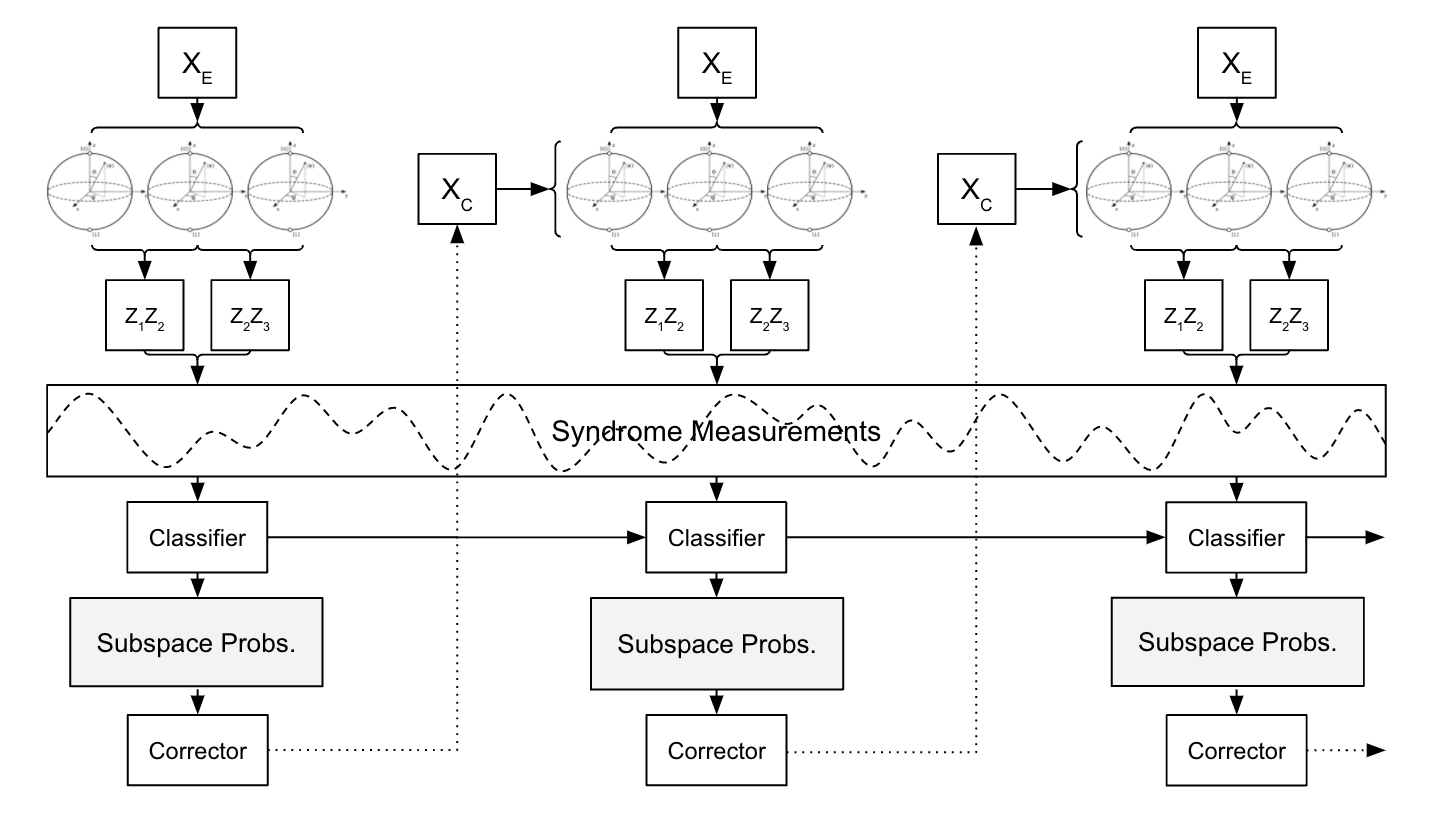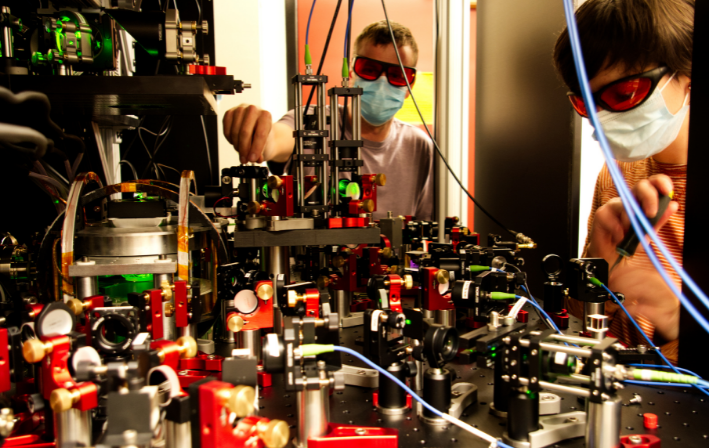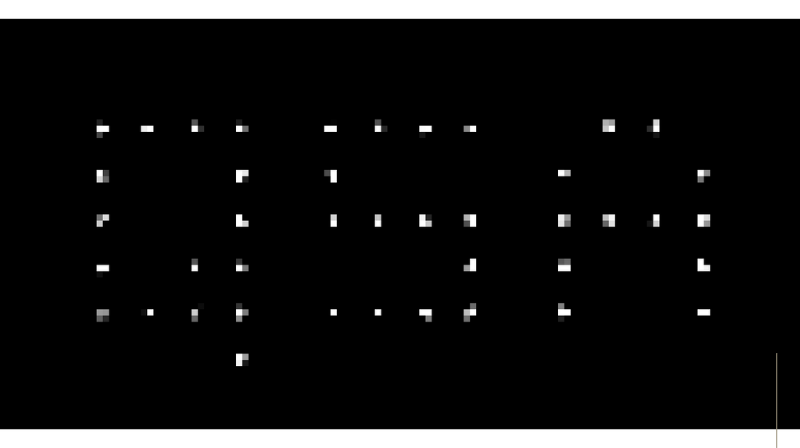The Quantum Systems Accelerator (QSA), a U.S. Department of Energy National Quantum Information Science Research Center, builds specialized quantum prototypes and investigates near-term algorithms and applications to help bring the benefits of quantum information science (QIS) technologies to society at large. By publishing more than 50 scientific papers in 2021 alone, and with a quantum control systems roadmap in place, QSA has spearheaded state-of-the-art advancements in programmable quantum systems based on all three leading technologies: neutral atoms, trapped ions, and superconducting circuits.
To accelerate its scientific endeavors in 2021 and further the fast-growing field of QIS, QSA formed topical groups around QSA’s three broad areas of research: algorithms and applications, programmable quantum systems, and integrated quantum engineering. Each group comprises researchers from QSA’s 15 member institutions. In an inclusive, integrated, and diverse environment, they hold monthly meetings to design and deploy projects in the critical technology areas currently developed in QSA, which often require center-wide interdisciplinary expertise. They also set detailed technical milestones to monitor the areas of overlap and track the opportunities for synergy, thereby supporting the path to powerful quantum computers.
Below are some of the many scientific breakthroughs led by QSA partner institutions and aided by the interdisciplinary and collaborative nature of QSA’s topical groups.
AN ADVANCED 256-QUBIT SIMULATOR BASED ON NEUTRAL ATOMS

Led by QSA member Harvard University, three topical groups collaborated on an advanced 256-qubit programmable simulator based on neutral atom systems. By using two-dimensional arrays of individually focused laser beams called optical tweezer traps, the researchers arranged the atoms in geometric shapes that could be programmed to generate different interactions between qubits.
One such programmable shape included a cubic lattice that simulated new quantum states of matter and phase transitions that had not been previously observed. With the ability to access an extremely large state space, this experimental platform offers a new tool for the study of complex quantum matter and other basic science. Moreover, the significantly larger numbers of atoms pave the way for new forms of quantum information processing and tailored algorithms.
Continue reading the paper in Nature and the accompanying news release at The Harvard Gazette.
A POWERFUL QUANTUM SENSOR BASED ON TRAPPED IONS

An interdisciplinary team of scientists, including the University of Colorado Boulder – a QSA member – developed a quantum sensor composed of roughly 150 beryllium ions trapped in a two-dimensional crystal. The sensor uses quantum entanglement in a fully controllable ultracold atomic system to achieve world-record sensitivities to electric fields that exceed the standard quantum limit – the measured noise levels set by quantum mechanics that typically set the limit for sensor performance. By overcoming such potential noise sources at the tiniest scales, the sensor opens the possibility of using trapped ion systems to explore dark matter, among other advanced applications.
Access the paper published in Science and the accompanying news release at NIST.
A NOVEL MACHINE LEARNING PROTOCOL FOR QUANTUM ERROR MITIGATION

Scientists at the University of California, Berkeley, a QSA partner institution, designed a new machine learning (ML) protocol to extract errors detected by continuous quantum error correction (CQEC) signals. In CQEC, the quantum system is continuously monitored for errors, such as a qubit flipping between 0 and 1. The resulting signals contain information about the system’s errors, but this information is hidden by noise. Therefore, extracting the relevant information accurately and efficiently is crucial to mitigate quantum errors in real-time.
The ML algorithm can extract errors more accurately than current real-time methods and perform similarly to the best theoretical decoder by training on data from a superconducting quantum processor. These advancements towards real-time error correction are critical for the path to extensible quantum computers.
Access the preprint to read the team’s results.
ACCELERATING THE QIS SCIENCE AND TECHNOLOGY INNOVATION CHAIN

The QSA topical groups created in 2021 have fostered deeper technical discussions across the center while considering diversity, equity, and inclusion as part of its core efforts. This collaborative ecosystem has enabled QSA to develop insights into how the advances in materials, qubits, devices, systems, and applications might be leveraged into one another, while simultaneously preparing the next generation of QIS scientists and engineers.
QSA is already working in its second year on the projects that require center-wide expertise and industry engagement, thereby supporting the Department of Energy’s mission areas and accelerating the enabling technologies for QIS.
Founded in 1931 on the belief that the biggest scientific challenges are best addressed by teams, Lawrence Berkeley National Laboratory and its scientists have been recognized with 14 Nobel Prizes. Today, Berkeley Lab researchers develop sustainable energy and environmental solutions, create useful new materials, advance the frontiers of computing, and probe the mysteries of life, matter, and the universe. Scientists from around the world rely on the Lab’s facilities for their own discovery science. Berkeley Lab is a multiprogram national laboratory, managed by the University of California for the U.S. Department of Energy’s Office of Science.
DOE’s Office of Science is the single largest supporter of basic research in the physical sciences in the United States, and is working to address some of the most pressing challenges of our time. For more information, please visit energy.gov/science.
Sandia National Laboratories is a multimission laboratory operated by National Technology and Engineering Solutions of Sandia LLC, a wholly owned subsidiary of Honeywell International Inc., for the U.S. Department of Energy’s National Nuclear Security Administration. Sandia Labs has major research and development responsibilities in nuclear deterrence, global security, defense, energy technologies and economic competitiveness, with main facilities in Albuquerque, New Mexico, and Livermore, California.
The Quantum Systems Accelerator (QSA) is one of the five National Quantum Information Science Research Centers funded by the U.S. Department of Energy Office of Science. Led by Lawrence Berkeley National Laboratory (Berkeley Lab) and with Sandia National Laboratories as lead partner, QSA will catalyze national leadership in quantum information science to co-design the algorithms, quantum devices, and engineering solutions needed to deliver certified quantum advantage in scientific applications. QSA brings together dozens of scientists who are pioneers of many of today’s unique quantum engineering and fabrication capabilities. In addition to industry and academic partners across the world, 15 U.S. institutions are part of QSA: Lawrence Berkeley National Laboratory, Sandia National Laboratories, University of Colorado at Boulder, MIT Lincoln Laboratory, Caltech, Duke University, Harvard University, Massachusetts Institute of Technology, Tufts University, UC Berkeley, University of Maryland, University of New Mexico, University of Southern California, UT Austin, and Canada’s Université de Sherbrooke. For more information, please visit: archive.quantumsystemsaccelerator.org.
